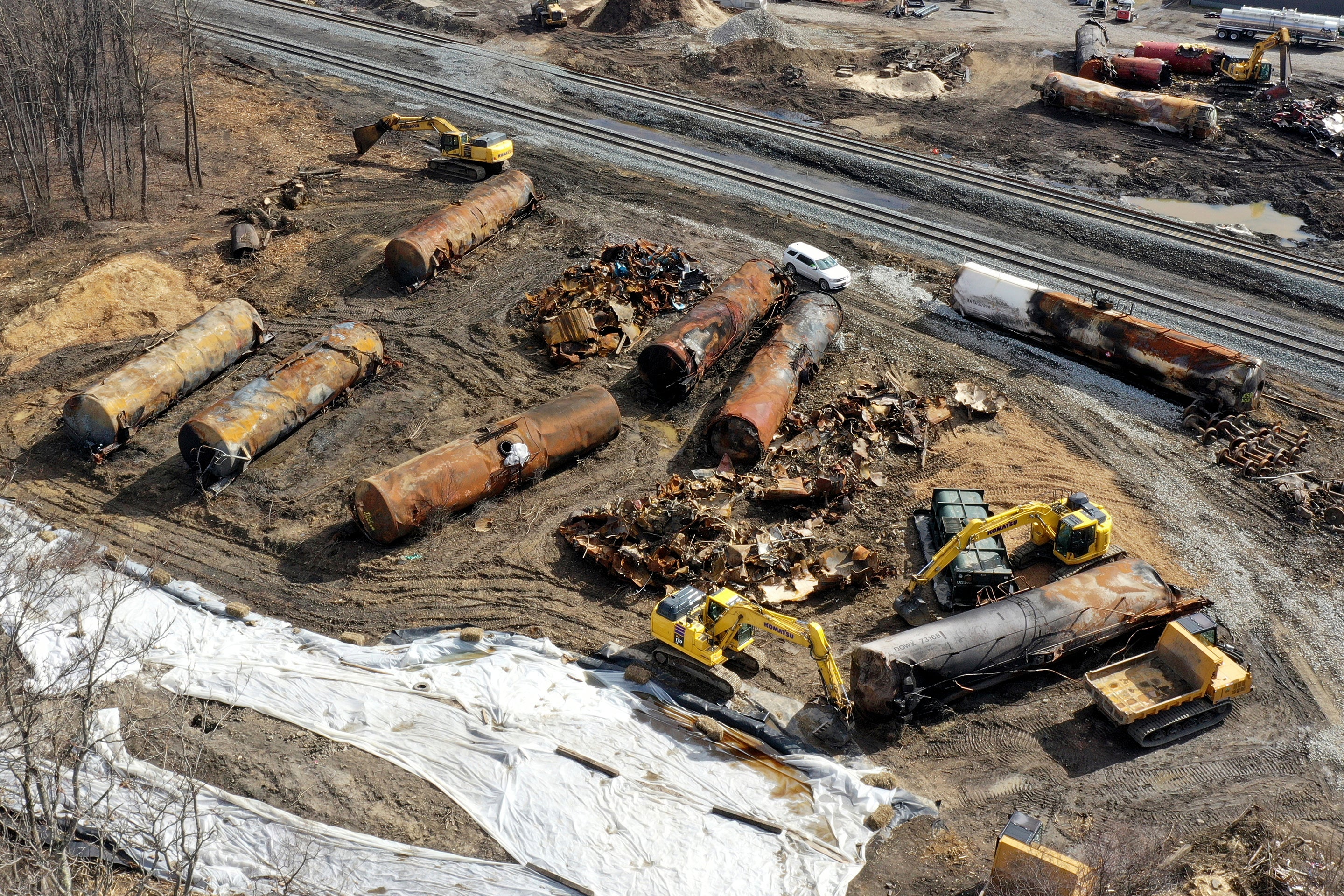Norfolk Southern investing in automated inspection systems on its railroad to improve safety
Norfolk Southern has installed the first of what will be more than a dozen automated inspection portals on its tracks in Ohio — not far from where one of its trains derailed in February and spilled hazardous chemicals that caught fire

Your support helps us to tell the story
From reproductive rights to climate change to Big Tech, The Independent is on the ground when the story is developing. Whether it's investigating the financials of Elon Musk's pro-Trump PAC or producing our latest documentary, 'The A Word', which shines a light on the American women fighting for reproductive rights, we know how important it is to parse out the facts from the messaging.
At such a critical moment in US history, we need reporters on the ground. Your donation allows us to keep sending journalists to speak to both sides of the story.
The Independent is trusted by Americans across the entire political spectrum. And unlike many other quality news outlets, we choose not to lock Americans out of our reporting and analysis with paywalls. We believe quality journalism should be available to everyone, paid for by those who can afford it.
Your support makes all the difference.To help quickly spot safety defects on moving trains, Norfolk Southern said Thursday it has installed the first of more than a dozen automated inspection portals on its tracks in Ohio — not far from where one of its trains careened off the tracks in February and spilled hazardous chemicals that caught fire.
The new portals, equipped with high-speed cameras, will take hundreds of pictures of every passing locomotive and rail car. The pictures are analyzed by artificial intelligence software the railroad developed.
The first of these new portals was recently installed on busy tracks in Leetonia, Ohio, less than 15 miles (24 kilometers) from where that train derailed in East Palestine in February.
Other major railroads have invested in similar inspection technology as they look for ways to supplement — and sometimes try to replace where regulators allow it — the human inspections that the industry has long relied on to keep its trains safe. Rail unions have argued that the new technology shouldn't replace inspections by well-trained carmen.
University of Delaware professor Allan Zarembski, who leads the Railroad Engineering and Safety Program there, said it's significant that Norfolk Southern is investing in so many of the portals. By contrast, CSX just announced earlier this year that it had opened a third such inspection portal.
David Clarke, the former director of the University of Tennessee’s Center for Transportation Research, said this technology can likely help spot defects that develop while a train is moving better than an worker stationed near the tracks can.
“It’s much harder for a person to inspect a moving car than a stationary one,” Clarke said. “The proposed system can ‘see’ the entirety of the passing vehicle and, through image processing, is probably able to find conditions not obvious to the human viewer along the track.”
Norfolk Southern said it expects to have at least a dozen of them installed across its 22-state network in the East by the end of 2024. The Atlanta-based railroad didn't say how much it is investing in the technology it worked with Georgia Tech to develop.
“We’re going to get 700 images per rail car -- terabytes of data -- at 60 miles an hour, processed instantaneously and sent to people who can take action on those alerts in real time," said John Fleps, the railroad's vice president of safety.
A different kind of defect detector triggered an alarm about an overheating bearing just before the East Palestine derailment, but there wasn't enough time for the crew to stop the train.
That crash put the spotlight on railroad safety nationwide and prompted calls for reforms. Since then, safety has dominated CEO Alan Shaw's time.